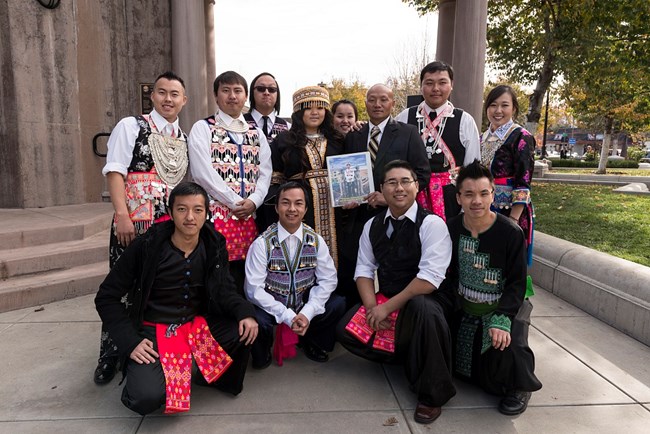Part of a series of articles titled Finding a Path Forward: Asian American Pacific Islander National Historic Landmarks Theme Study.
Article
Essay 15: Asian Immigrants and Refugees: Demographic Transformations in the United States from World War II to the Present

Photo by Carol M. Highsmith, 2012. In the collections of the Library of Congress (http://hdl.loc.gov/loc.pnp/highsm.23943).
Since World War II, especially with the passing of the Immigration and Nationality Act of 1965 and the refugee flows starting in 1975, the number of Asian Americans has increased significantly. It has become the fastest growing population in the nation, even outpacing the growth of the Latino population. US foreign policy, including US colonization and involvement in wars in Asia, such as the Philippine-American War (1899-1902), Pacific War (1941-1945), Korean War (1950-1953), and Vietnam War (1965-1975), are interlinked to the migration of Asians to the US. Unlike the earlier historical period when most Asian immigrants arrived as laborers, Asians in the contemporary period have divergent paths of migration and may enter the United States as refugees, orphans, adoptees, spouses, veterans, professionals, or students, as well as close relatives of US residents. The classification and regulation of immigrants and refugees does not reside with the person as it does with the institutional entries that enact differential treatment based upon selective criteria, such as race, citizenship, and national origin, and these constructions fluctuate according to political circumstances.[1]
In 1860, the US Census recorded almost 35,000 Asians in the country, mainly Chinese immigrants in California, and 90 percent were male, accounting for 0.1 percent of the total US population. Due to immigration restrictions, the Asian American population was barely 500,000 in 1960. However, with changing immigration and refugee policies, five decades later in 2010, there were 17.3 million Asians in the United States... Read more >> (.pdf 3.0MB)
[1] Mai Ngai, Impossible Subjects: Illegal Aliens and the Making of Modern America (Princeton, NJ: Princeton University Press, 2005).
The views and conclusions contained in the essays are those of the authors and should not be interpreted as representing the opinions or policies of the U.S. Government. Mention of trade names or commercial products does not constitute their endorsement by the U.S. Government.
Tags
Last updated: July 23, 2024
